Eat Like an Insect - Indoor Nature Connection Day 6
[et_pb_section fb_built="1" admin_label="section" _builder_version="3.22"][et_pb_row admin_label="row" _builder_version="3.25" background_size="initial" background_position="top_left" background_repeat="repeat"][et_pb_column type="4_4" _builder_version="3.25" custom_padding="|||" custom_padding__hover="|||"][et_pb_text admin_label="Text" _builder_version="3.27.4" background_size="initial" background_position="top_left" background_repeat="repeat"]
Today we'll be investigating how different kinds of insects eat and how their mouthparts are specially adapted to eat the food in their environments. This interactive activity allows kids to try to eat like different insects and learn how their unique mouths dictate the type of food that they can consume.
Materials
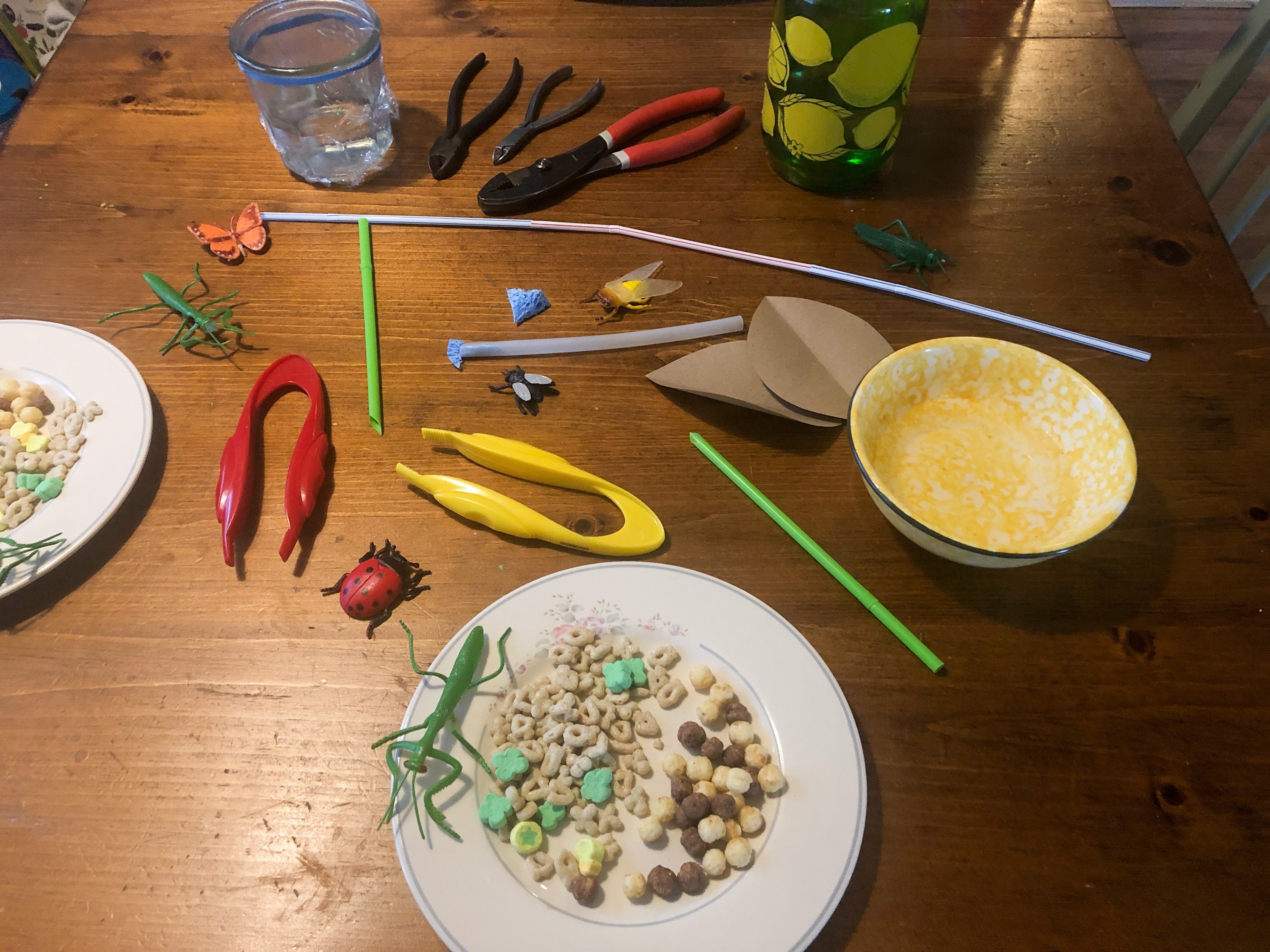
- Tweezers, Pliers, Tongs, Or Clothespins
- Straws
- Cups - 1 shorter, filled halfway with water or other drink // 1 taller and longer, filled halfway
- Plastic Wrap
- Sponge - small piece with a straw sized hole cut out
- Paper cut in a leaf shape
- Food items like cheerios, goldfish, or other small pieces (cereal works great!)
- Plastic Bugs (Optional)
After gathering your materials, cover the shorter cup with plastic wrap and secure with a rubber band. Take one straw and cut a sharp angle on one end. Cut a small piece of sponge and squish it into the end of another straw. With two or three other straws, push them into one another to make one longggg straw. Set up a couple plates with your food items.
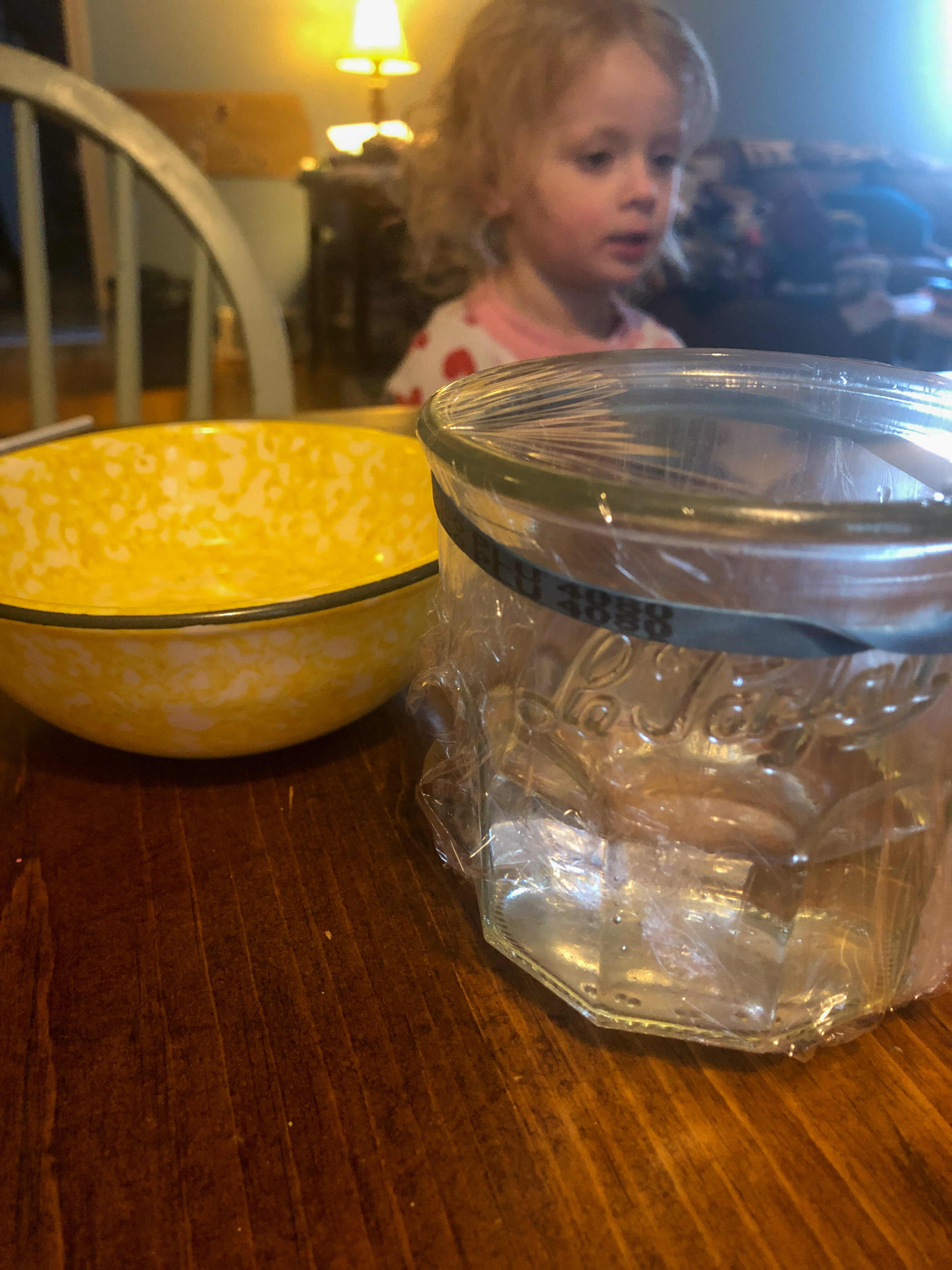
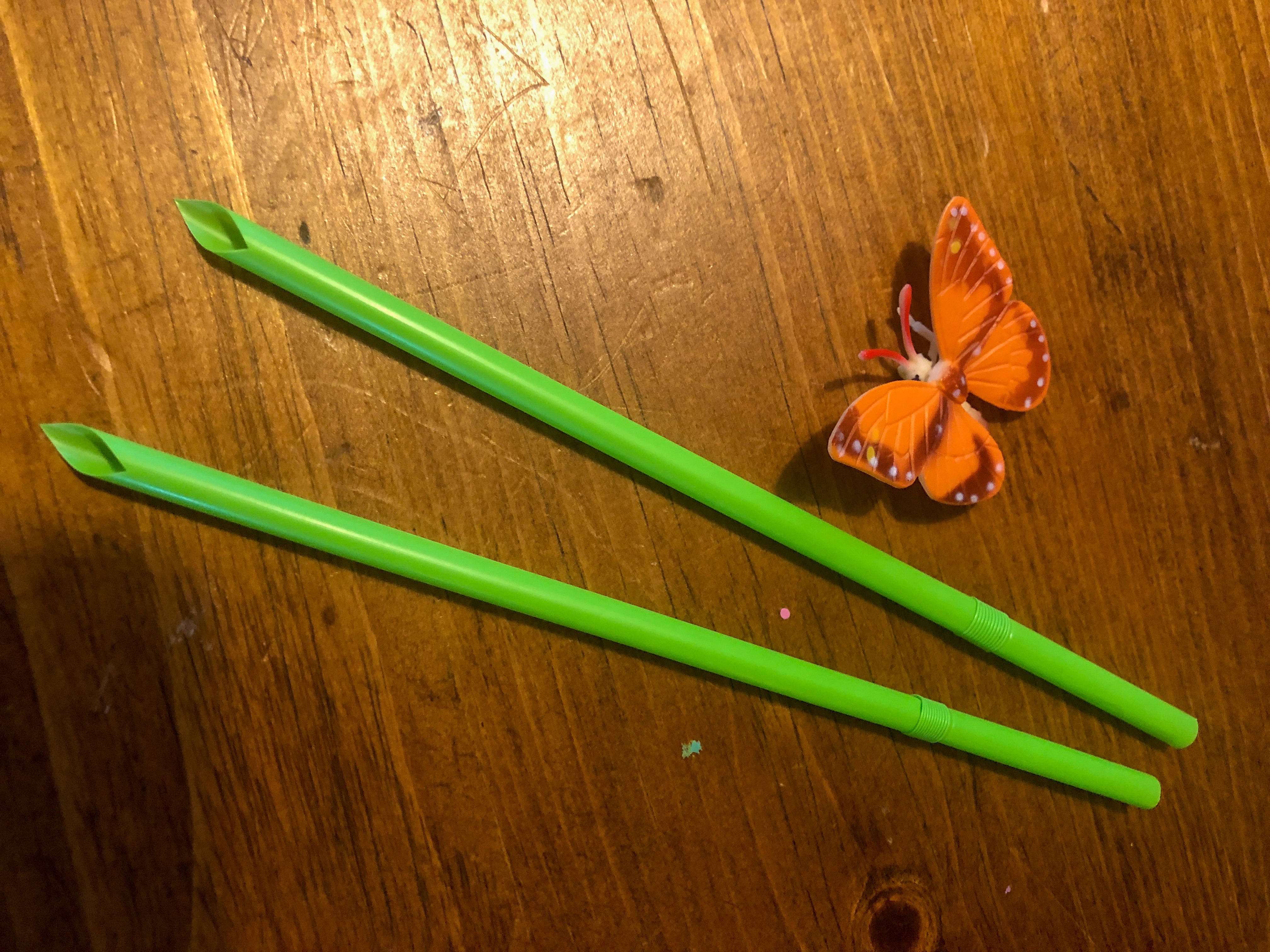
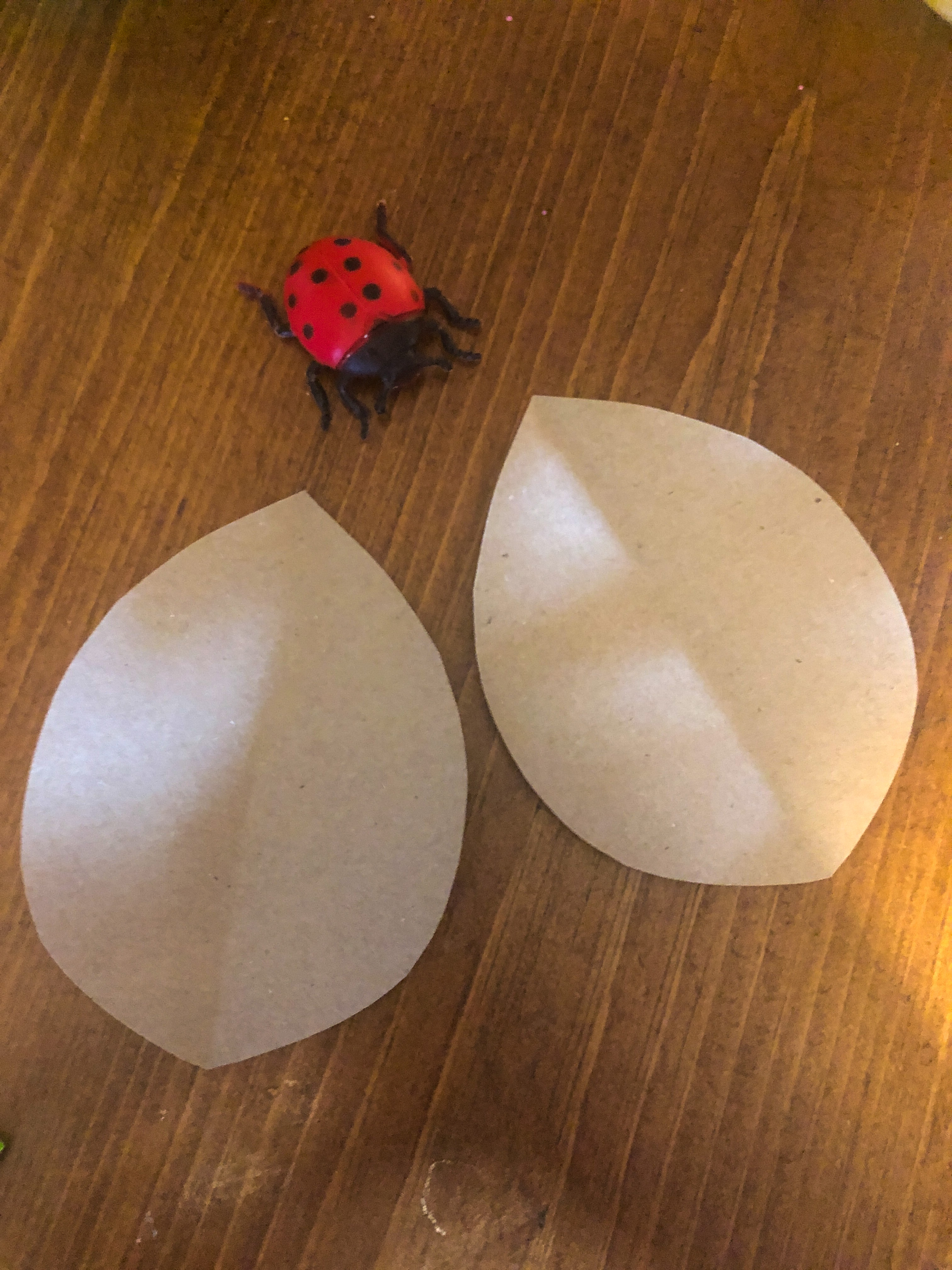

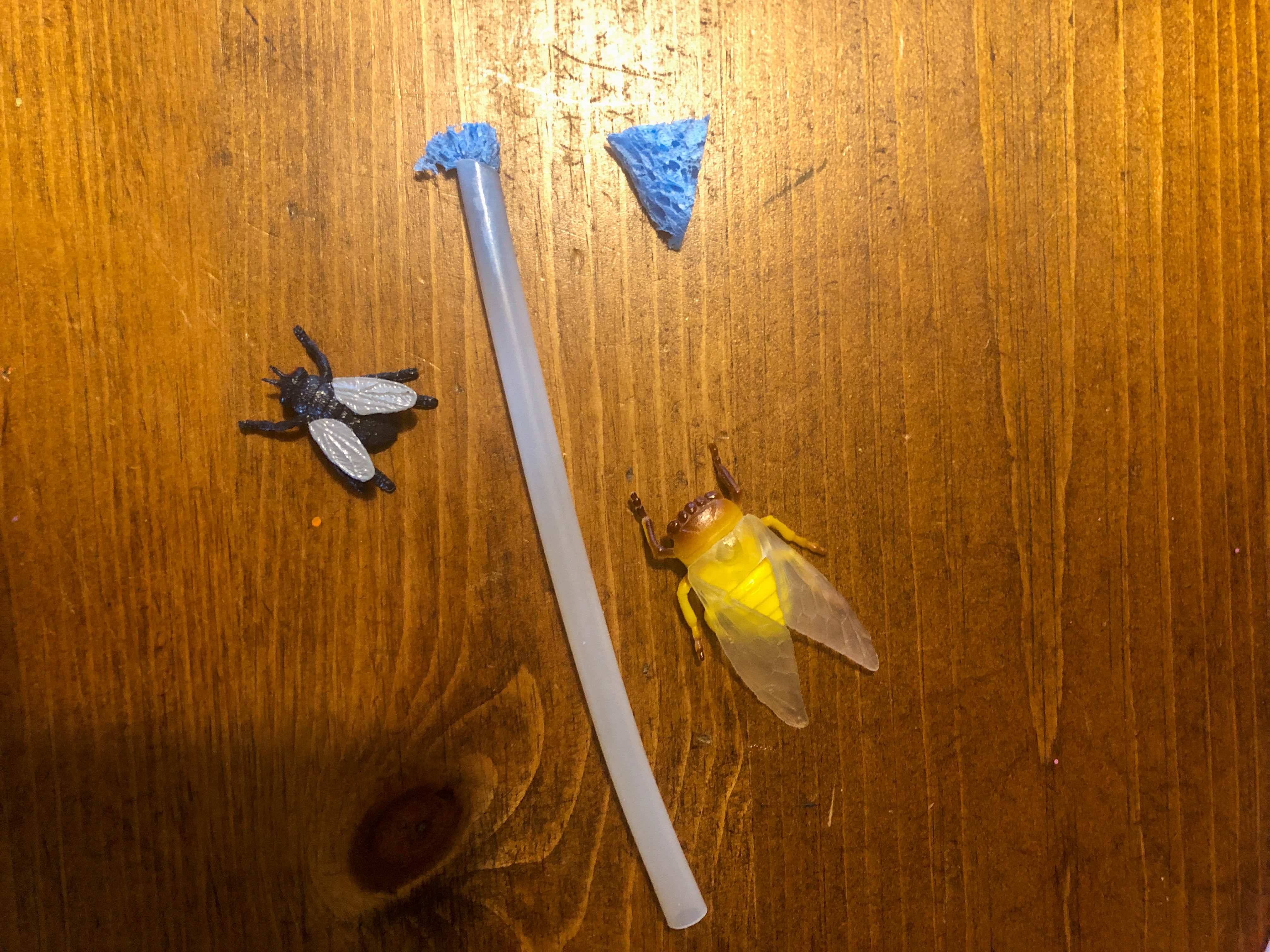
We discussed different types of insects and the way their mouthparts looked physically.
This chart was a handy visual and the plastic bugs we dug out of the cavernous toy box were helpful to understand the different parts and what they look like.
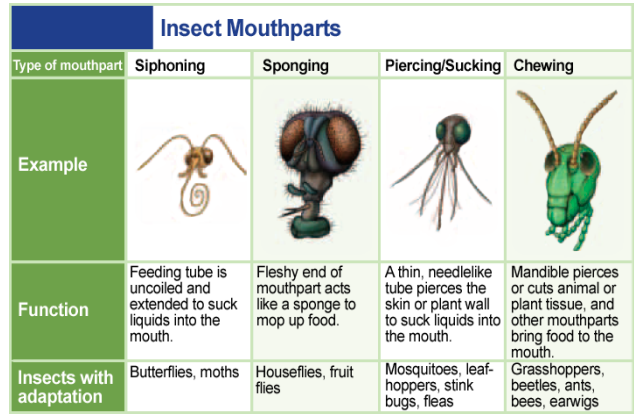
After that we dove right into the mouthpart mayhem.
We started our activity with Siphoning.
Adult butterflies and moths have siphoning mouthparts. A flexible tube slips into flower cavities and sucks up fluids, like nectar. When not in use the tube rolls up like a party favor!
Looking at the materials spread out on the table, I had the kids choose which item looked most like the feeding tube or proboscis of a butterfly. They found this one right away. Then we imagined we were a hungry butterfly perched at the top of a deep flower. How would we ever get to the nectar at the bottom?!

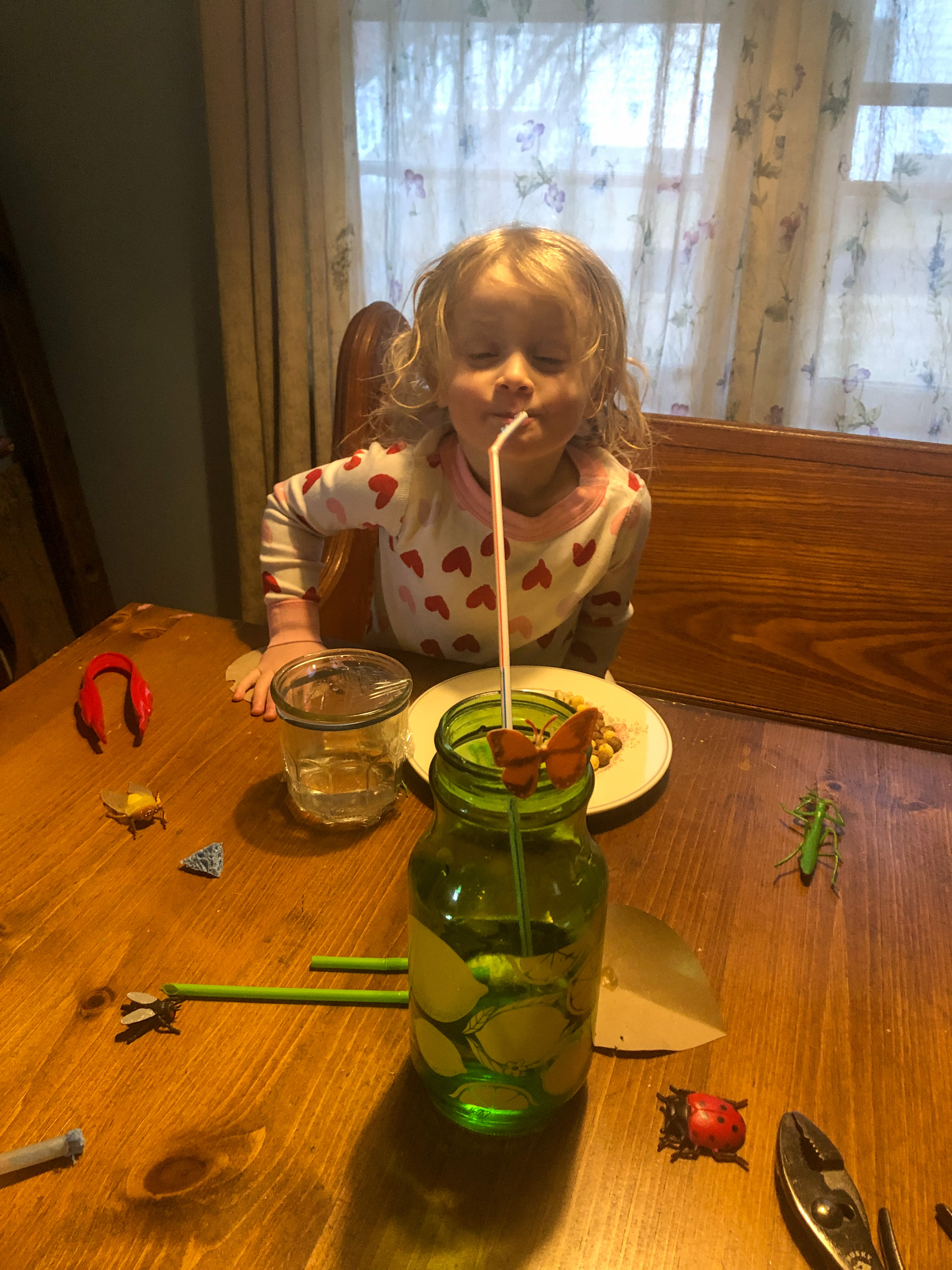
Next we looked for Mandibles. Insects such as beetles, grasshoppers and caterpillars have mouthparts that are like pruning shears. Their jaws, called mandibles, chew through leaves by moving from side to side. I asked the kids to find what item on the table was mandible-like?

They used the pliers and tweezers to grind and "chew" the leaf shaped paper. Clothespins or tongs could also be used.
A large group of insects, like mosquitoes, stink bugs and cicadas, have tube-like mouthparts that pierce into their food source first and then suck up its juices. This one was funnnn.
I asked them to think like a mosquito. What item would you use to "bite" and suck blood? They grabbed the pointed straws and pierced the plastic wrap "skin." I ended up rewrapping the cup multiple times because they got such a kick out of playing mosquitoes.
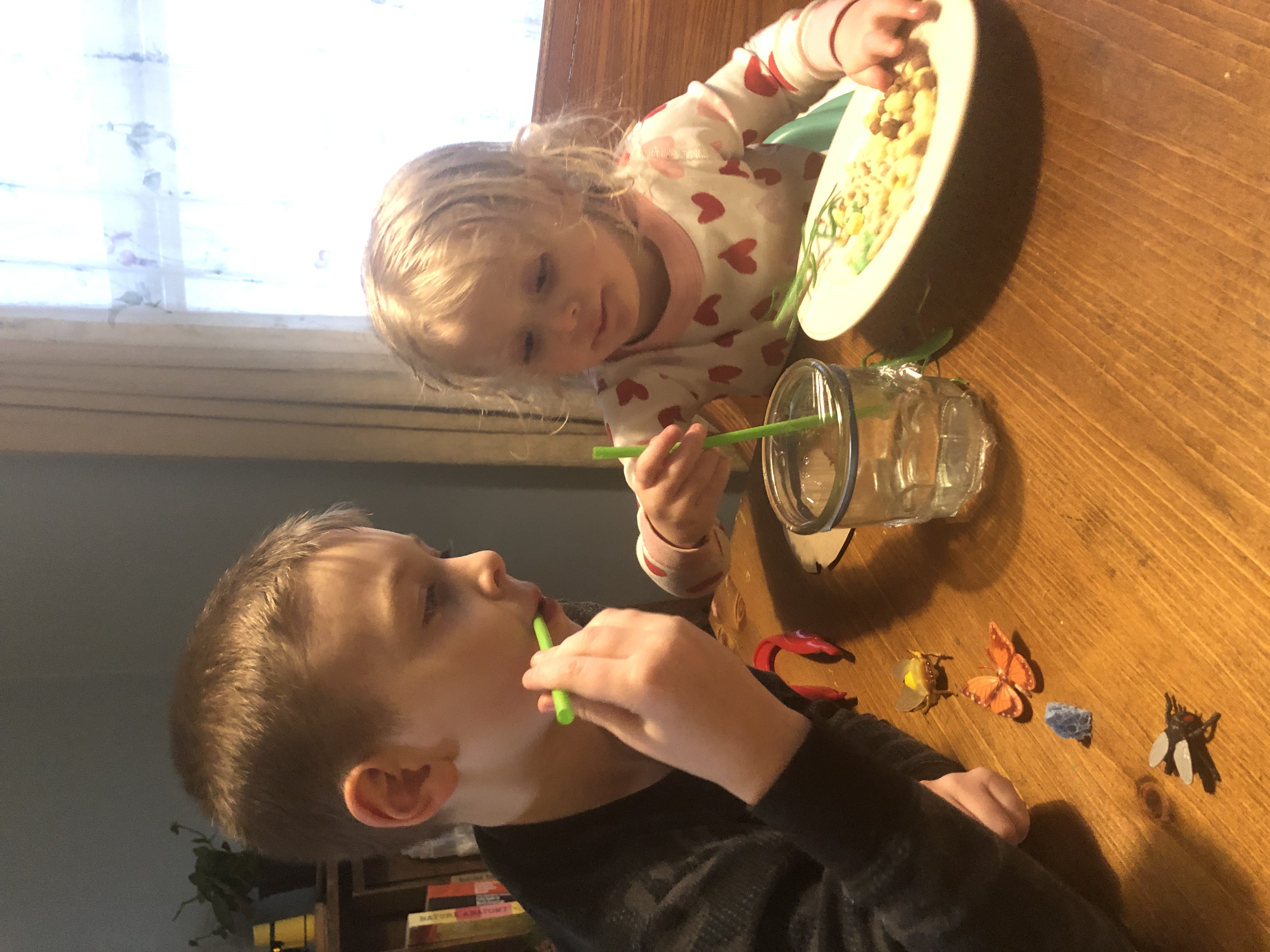
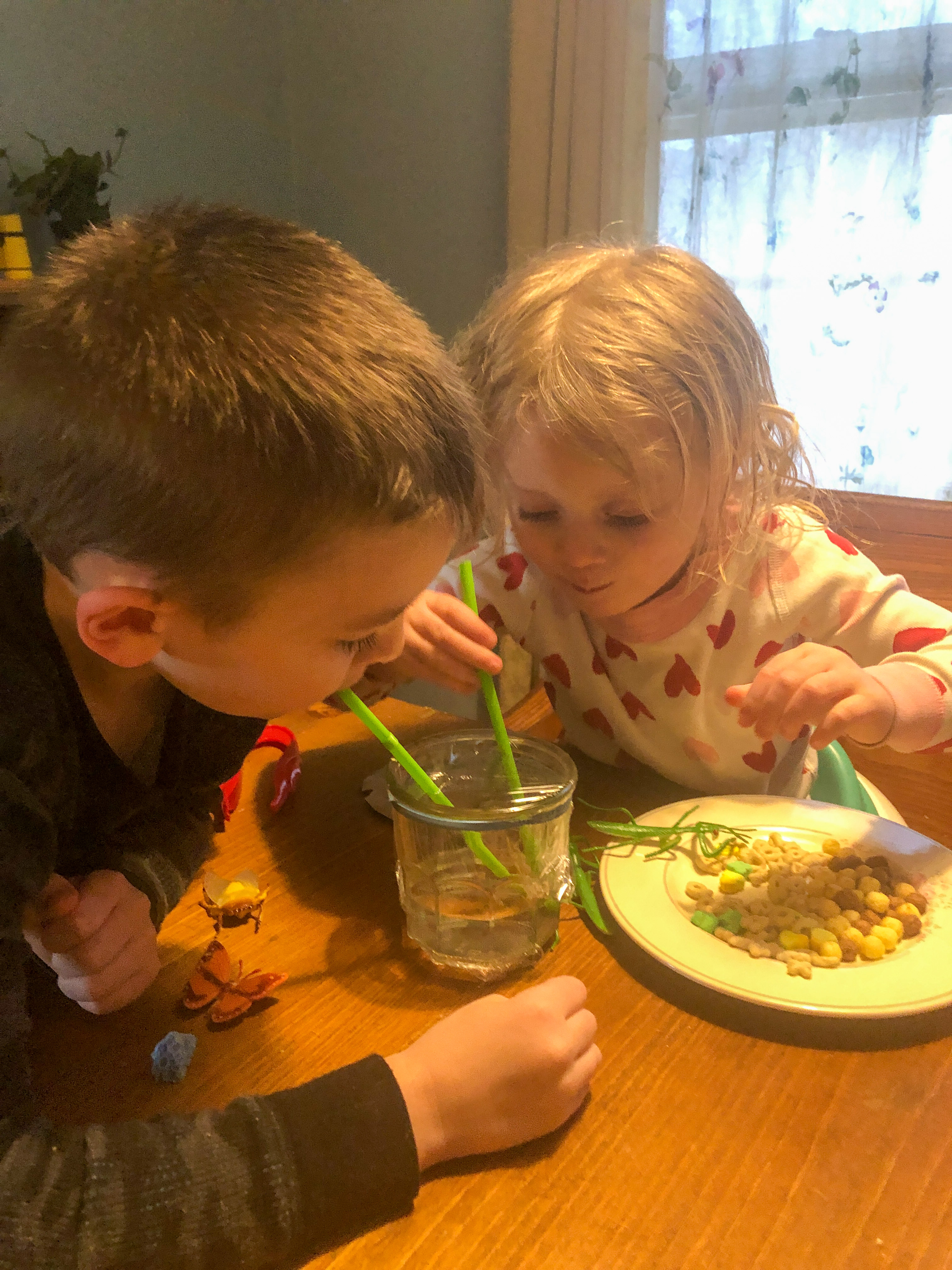
Lastly, we explored Sponging. Certain types of flies have mouthparts that are like bits of sponge. They must wet their food by regurgitating saliva that allows the food to dissolve. With the straw that had the sponge placed on the end, I instructed the kids to take a sip of water and get the sponge wet. Then to hold some of that water in their straw before moving it over their plate of food and releasing the water on top. Ewww. Another hit with the kids though! They waited until the cereal got soggy and then tried to suck it up the straw.


The kids had fun eating like different insects and it was interesting to learn that insects are limited to foods that their mouthparts and digestive systems can manage, a lot like people.
Subscribe below to get more activities delivered to your inbox!
Be sure and share your projects & experiences, tag
[/et_pb_text][/et_pb_column][/et_pb_row][/et_pb_section]

